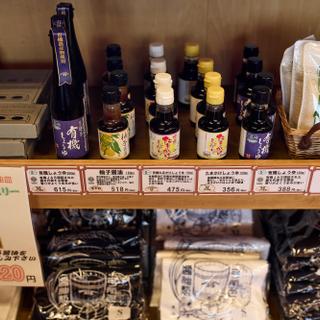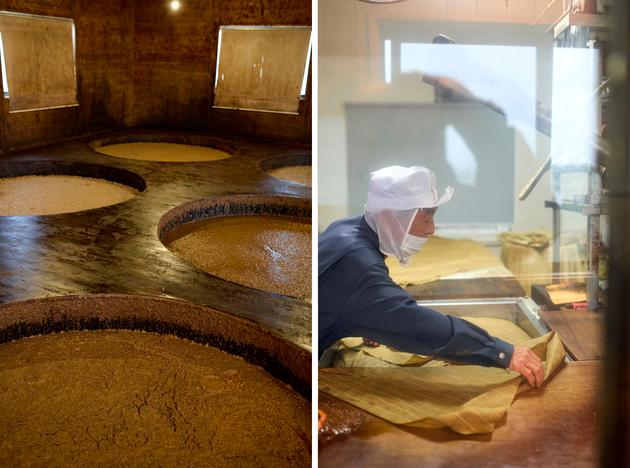


Enjoying soy in all its forms
Feature'Influential Japanese cuisine' (5/6). From edamame to tofu, the legume is as ubiquitous as it is indispensable in Japanese dishes. It reveals a depth of flavor that is yet to win over French taste buds.
When you visit the Yugeta soy sauce factory in northwest Tokyo at lunchtime, you first head to the upstairs cafeteria for a meal. The lunch tray is quite telling. In a myriad of small bowls and plates, you'll find edamame (tasty soybeans in their pods, usually roasted); a miso-flavored broth (fermented soybean paste); tofu (sometimes described as soybean "curd"); and even natto (fermented soybeans with a slimy texture that can be off-putting to Westerners). For seasoning, the establishment provides a range of homemade sauces made from organic soybeans. And for dessert? An astonishingly delicate sweet white sorbet, naturally flavored with soy.
The widespread presence of this legume is not merely due to dining in a specialized factory. In Japan, soy is everywhere. Tofu, miso and natto appear in every dish, from country inn breakfasts to dinners at fashionable izakayas (Japanese eateries) in the capital.
It's an indispensable ingredient in Japan, used in countless ways and consumed daily. Rich in protein, this meat substitute is also one of the cornerstones of shojin ryori, the vegetarian cuisine developed by Buddhist monks almost 1,500 years ago, which is still served in temples and restaurants across the country.
In the factory's cafeteria, where traditional methods have been preserved, you'll be surprised by the sophistication of the homemade sauces. Forget sweet soy sauce – an abomination to Japanese connoisseurs – created specifically for the French by the Japanese multinational Kikkoman in the mid-2000s. The products available here at reasonable prices (from €5 a bottle) bear no resemblance to the industrial versions commonly consumed in France. Some are highly complex in flavor, with acidity, bitterness and woodiness all at once, while others reveal delicious smoky undertones.


"In our factory, sauces are made using a natural fermentation process in wooden barrels for over a year," said owner Yohichi Yugeta, the founder's grandson, who has remained true to the original flavors. "We're one of the few companies to sell unpasteurized sauces, which don't keep as long but are rich in micro-organisms. They have health benefits and a more enduring flavor."
Like vinegar
French people are often puzzled by these sauces. "It's not part of our culinary vocabulary," said Fanny Fernandes, who left Béziers to set up her own restaurant, Cocotte Cuisine, in Tokyo. She noted how every Japanese household has soy sauce in their pantry, which can be used like vinegar or a condiment to add depth to a dish: "Soy sauce can enhance everything from broth to udon or soba noodles; marinated meat or fish; or even a vinaigrette with olive oil. Personally, I even add it to wine-based sauces. You have to lose your inhibitions!"
You have 60.51% of this article left to read. The rest is for subscribers only.
